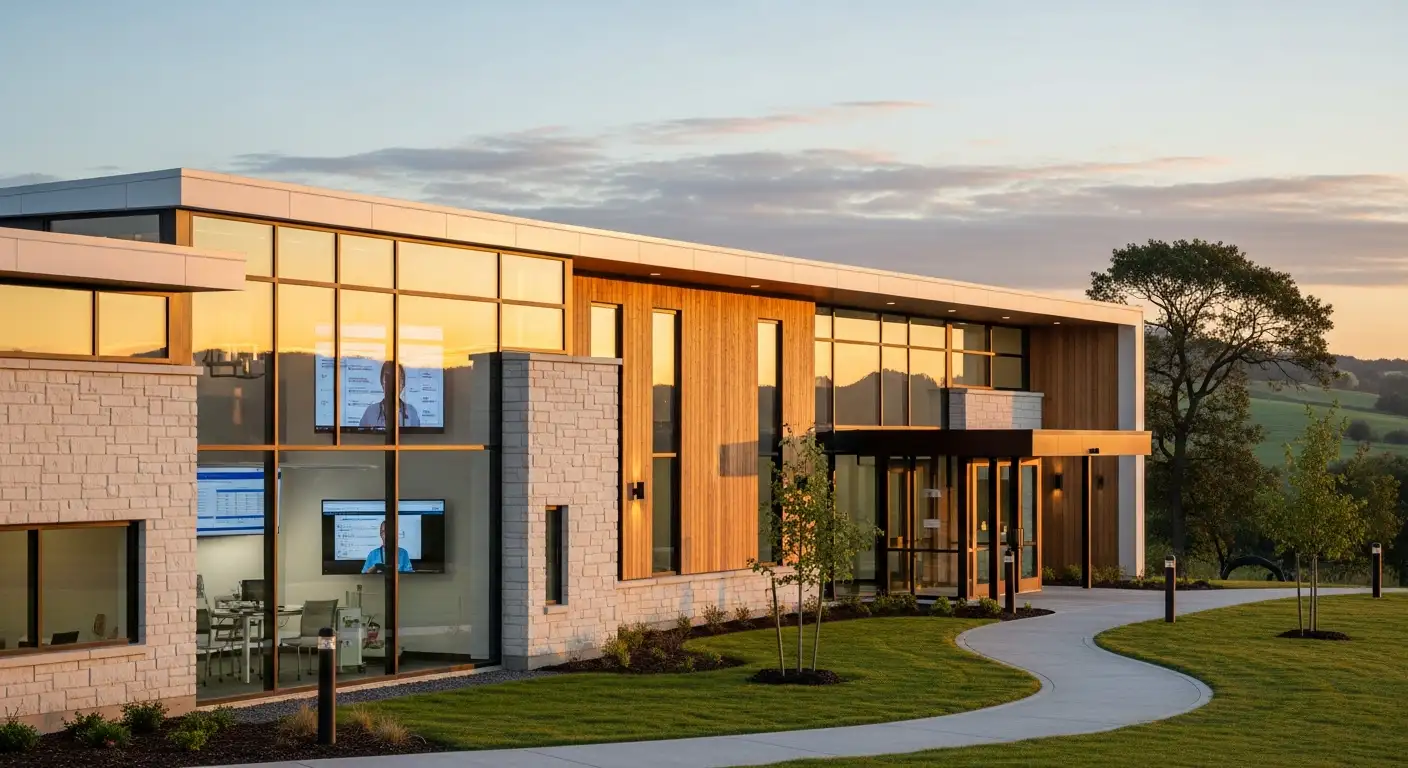The Critical Role of Family in Senior Behavioral Health Care
Family involvement is a cornerstone of effective behavioral health planning for seniors, impacting their emotional, physical, and social well-being. As the aging population grows, fostering active and meaningful family participation becomes essential for optimizing care outcomes, supporting recovery, and ensuring respectful, personalized treatment. Despite challenges such as societal stigma, privacy concerns, and recent disruptions caused by the COVID-19 pandemic, innovative policies and collaborative practices are transforming how families are integrated into senior behavioral health services.
Frameworks and Policies Supporting Family Involvement
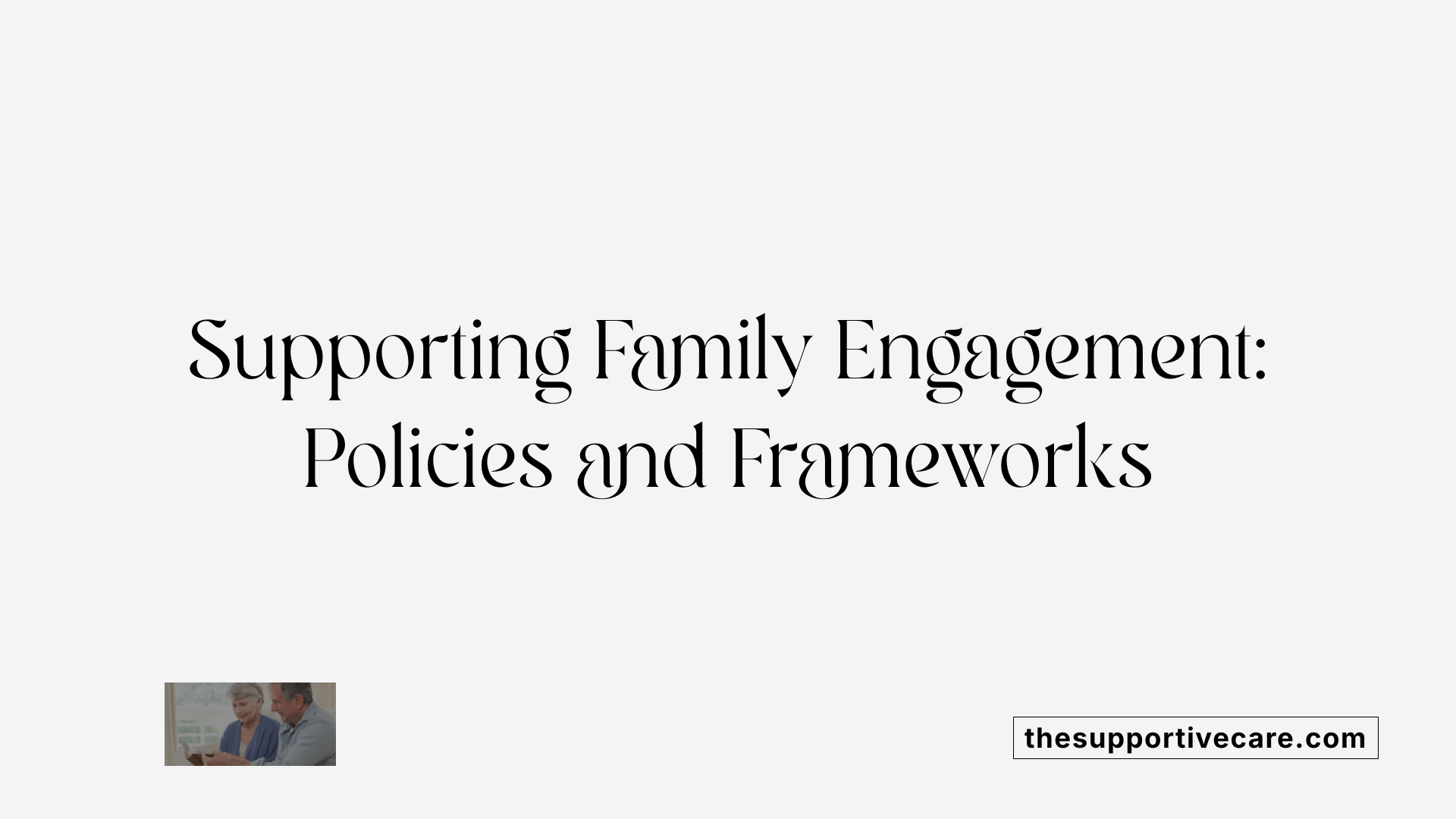
Why is family connection important for seniors' mental and physical health?
Strong family ties are essential for the overall well-being of older adults. Family connection provides emotional support, creating feelings of safety, belonging, and self-worth. These bonds help reduce loneliness and depression, which are common issues among seniors.
Healthy family relationships motivate seniors to adopt healthier lifestyles. They encourage physical activity, adherence to medical treatments, and engagement in social activities. This support system is crucial for managing chronic illnesses and recovery from health setbacks.
Research shows that meaningful social interactions with family can boost cognitive function and lower the risk of dementia. Family involvement helps stimulate mental engagement, which is vital for brain health.
Practically, family members assist with healthcare routines, monitor health changes, and advocate for appropriate services. During illness or injury, familiar family support can accelerate healing by decreasing stress and strengthening immune responses.
In sum, maintaining active and positive family relationships plays a fundamental role in improving mental and physical health outcomes. It contributes to a more active, independent, and fulfilling life for seniors.
The multisector plan for aging (MPA) and its role in integrating family caregivers
The Multisector Plan for Aging (MPA) serves as a broad, strategic framework led by state agencies to enhance service coordination for older adults and individuals with disabilities. Its primary goal is to ensure comprehensive support that addresses the needs of the entire aging and disability spectrum.
A central aspect of the MPA is recognizing the vital role of family caregivers. These caregivers provide the majority of care, often performing tasks that range from personal assistance to emotional support. The plan emphasizes engaging families actively in the development and implementation of aging policies.
Developed collaboratively by the Center for Health Care Strategies (CHCS) with backing from The John A. Hartford Foundation and the Michigan Health Endowment Fund, the MPA highlights strategies for including family caregivers. This includes collaborating with families on care planning, policy creation, and service delivery.
States like Minnesota and Texas showcase how the MPA can prioritize family caregivers within a broader aging support system. Their initiatives under the 'Helping States Support Families Caring for an Aging America' program demonstrate effective integration of family needs and perspectives into state policies.
By promoting family involvement, the MPA aims to improve care quality, ensure that services are responsive, and support caregivers in their essential roles. It advocates for policies that recognize family caregivers as key partners in aging care, thus fostering more resilient and inclusive support networks.
Key policies endorsing family engagement: CARE Act and the American Families Plan
Legislation such as the CARE Act (Caregiver Advise, Record, Enable) and the American Families Plan play foundational roles in strengthening family involvement in elder care.
The CARE Act mandates that hospitals notify designated family caregivers about a patient's admission, discharge, and care instructions. It also encourages the inclusion of family at bedside during hospital stays and in post-discharge planning. This legislation ensures families are informed and involved at critical health transitions, which improves safety and continuity of care.
Similarly, the American Families Plan emphasizes policies to support family caregivers through expanded paid leave, increased funding for home-based care, and caregiver training programs. It recognizes caregivers as essential partners in the healthcare system, aiming to reduce caregiver burden and improve support services.
Both policies aim to formalize family participation in decision-making processes, promote better communication between healthcare providers and families, and provide resources to sustain caregivers' vital roles.
Policy impact and future directions
Implementing these policies encourages a more family-centered approach, ensuring that caregivers are supported and empowered. They serve as a foundation for broader strategic efforts, including the development of caregiver resource hubs, training programs, and legal protections.
Continued advocacy is needed to expand and refine these policies, ensuring they adapt to diverse family structures and cultural contexts. As the aging population grows, these policies will be instrumental in creating a sustainable framework for family engagement in elder care.
| Policy/Program | Focus Area | Impact | Additional Details |
|---|---|---|---|
| CARE Act | Hospital discharge & care transitions | Ensures family notification and involvement | Promotes safety and continuity of care during health transitions |
| American Families Plan | Caregiver support & paid leave | Provides financial and educational support | Aims to reduce caregiver stress and sustain caregiving roles |
| Multisector Plan for Aging | Cross-agency, stakeholder engagement | Coordinates services, prioritizes family caregivers | Embeds family priorities into state-level aging strategies |
These policies, together, form a comprehensive framework that promotes family involvement, enhances care quality, and supports caregivers in their indispensable roles in older adult health and well-being.
Family's Role in Long-Term Care Settings

How does family involvement influence care management and monitoring in residential and assisted living settings?
Family involvement is fundamental to effective care management in residential and assisted living environments. Families serve as advocates, monitors, and collaborators within the care system. By maintaining regular communication with staff, they ensure that residents' evolving needs are promptly identified and addressed.
This active participation helps tailor personalized care plans that suit the unique preferences and histories of residents. Family members observe behavioral and health changes, providing essential insights that facilitate early interventions.
Their engagement in daily routines and decision-making fosters trust and transparency, leading to better care outcomes. When families participate in care planning meetings, they help ensure that treatment goals are aligned with the resident's wishes, preferences, and cultural backgrounds.
Family involvement also plays a critical role during transitions such as hospital admissions, discharges, and end-of-life care. Ensuring that residents’ preferences are acknowledged and respected mitigates risks for adverse events and enhances emotional support.
Furthermore, family participation in social activities and outings enhances social engagement, reducing feelings of loneliness and depression among residents. Overall, this collaboration results in a higher quality of life, better behavioral health, and improved emotional well-being.
| Role of Family in Care Management | Activities Included | Impact on Resident Outcomes |
|---|---|---|
| Advocacy and Monitoring | Regular visits, health observation | Early detection of health issues, tailored care |
| Communication & Decision-Making | Care planning meetings, policy input | Increased resident satisfaction and safety |
| Social Engagement | Participating in activities, outings | Reduced loneliness, better mental health |
| Transition Support | Hospital transfers, end-of-life planning | Smoother transitions, respect for preferences |
How has recent events, like COVID-19, affected family involvement and behavioral health planning for seniors?
The COVID-19 pandemic profoundly affected family involvement in senior care, particularly in long-term care facilities. Stricter visitor restrictions aimed at controlling infection spread resulted in limited or no in-person visits, disrupting vital social connections.
This social deprivation contributed to residents experiencing 'failure to thrive,' characterized by physical decline, emotional distress, and mental health challenges, including depression and loneliness. Family caregivers faced increased stress, anxiety, and guilt due to reduced contact, often feeling uninformed and powerless about their loved ones’ care.
The pandemic highlighted the importance of maintaining family engagement through alternative means such as virtual visits and video calls. However, technological barriers, cognitive impairments in residents, and staff shortages sometimes limited these efforts.
Supporting the mental health of families and residents became a priority, leading to increased emphasis on improving communication strategies and providing emotional support. Healthcare providers recognized the need for flexible, multi-layered approaches to sustain family involvement while safeguarding health.
This experience underscored the importance of including families in care planning more proactively, ensuring they remain engaged and informed even during crises. It prompted healthcare systems to develop contingency plans that balance infection control with meaningful family participation.
Incorporating Family in Future Care Planning
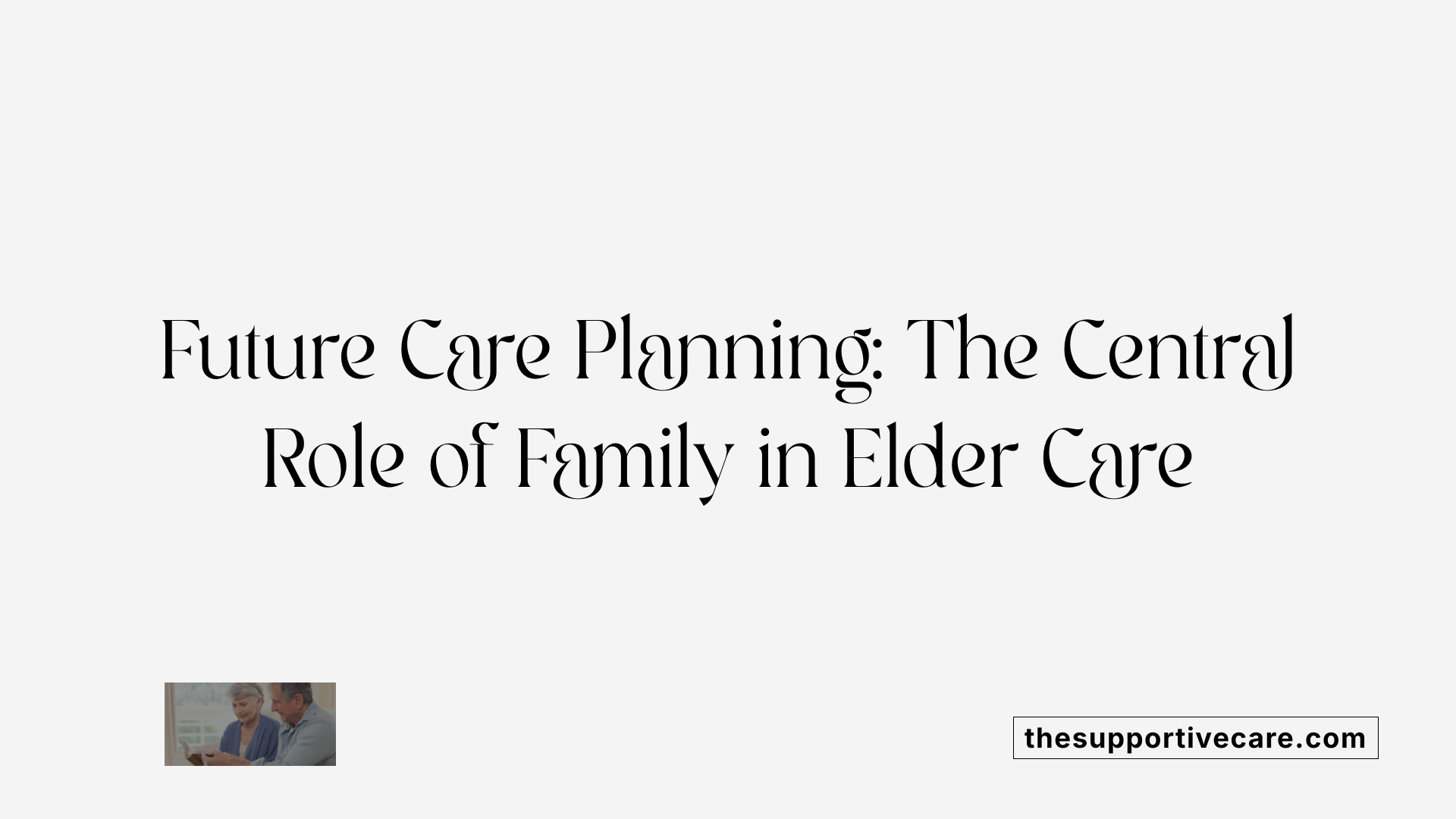
What role does family play in future care planning for seniors with mental health or chronic conditions?
Family members are integral to the future care planning process for older adults, especially those with mental health issues or chronic illnesses. Their involvement helps ensure that care strategies reflect the elder's personal preferences, needs, and values.
Active participation in decision-making allows families to advocate for appropriate treatments, living arrangements, and supportive services. This collaborative approach enhances the elderly person’s sense of autonomy and confidence, contributing positively to their mental well-being.
Families also assist in navigating complex long-term care options, helping to choose suitable facilities or home care services. They play a pivotal role in managing legal and financial considerations, including establishing power of attorney, creating advance directives, and setting up guardianship arrangements.
Beyond legal and logistical support, families provide ongoing emotional backing that fosters trust and security. Shared knowledge of health routines, personal preferences, and medical histories helps tailor care plans to the individual.
Regular communication between families and care providers promotes early detection of health changes, smoothens transitions between care settings, and helps maintain a stable, supportive environment. Ultimately, family involvement enhances the quality of life for seniors by ensuring comprehensive, personalized, and respectful care.
Legal and financial considerations in care planning
Legal and financial planning are essential components of preparing for future elder care. Establishing advance directives and healthcare powers of attorney ensures that the elder’s wishes are respected in medical decision-making.
Financial arrangements might include planning for long-term care expenses, obtaining appropriate insurance, and safeguarding resources through trusts or guardianship.
Clear legal documentation helps prevent disputes among family members and ensures continuity of care, especially in emergencies or when the senior’s capacity to make decisions diminishes.
Family members typically assist with these processes by gathering necessary documents, consulting legal and financial professionals, and understanding the implications of various options.
The emotional impact and trust-building within families
Strong, open communication fosters trust and emotional closeness among family members.
Discussing future care actively reduces anxiety, misunderstandings, and conflicts, creating a supportive environment.
Addressing fears and expectations openly helps family members prepare emotionally for their roles and responsibilities.
Building positive relationships during planning stages encourages cooperation and coordinated action, which benefits the older adult’s overall well-being.
Supporting each other emotionally during difficult conversations can strengthen bonds, making future caregiving and decision-making smoother and more compassionate.
In summary, involving family in future care planning for seniors enhances not only practical outcomes but also emotional resilience, trust, and shared commitment to the elder’s health and happiness.
Overcoming Barriers to Family Engagement
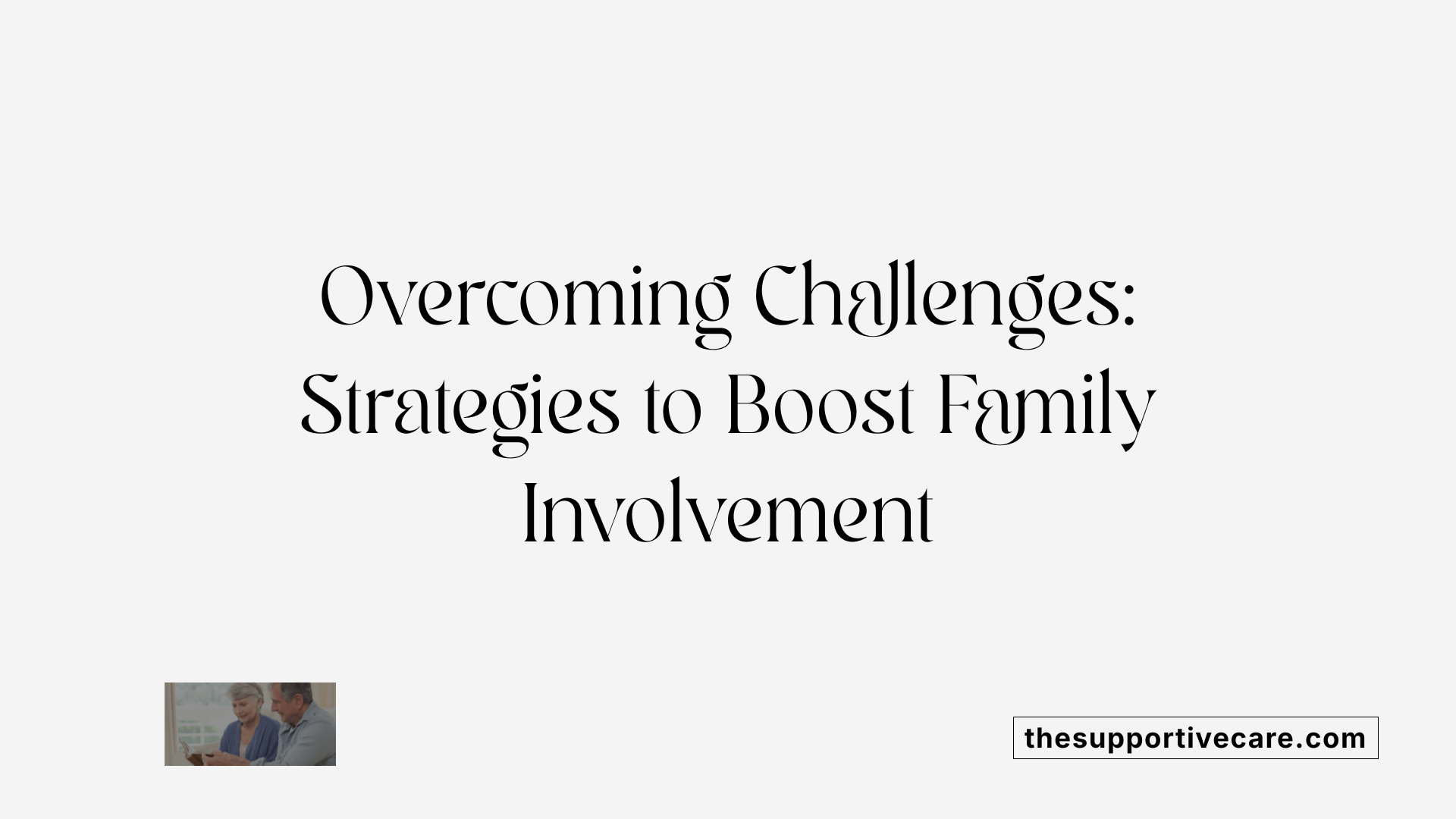
What are some challenges and barriers to involving families in behavioral health planning for seniors, and how can they be overcome?
Family involvement in the behavioral health care of older adults is essential but often faces several obstacles. Understanding and addressing these barriers is crucial for improving care quality and outcomes.
One common issue is communication gaps. Families and healthcare providers may struggle with clear, consistent dialogue, leading to misunderstandings or misaligned expectations. Privacy concerns also complicate involvement, as older adults or institutions might be hesitant to share information without explicit consent.
Societal stigma surrounding mental health can discourage families from openly discussing issues or seeking help. Additionally, family conflicts or strained relationships can hinder collaboration. Caregiver burden, with many family members experiencing stress and burnout, reduces their capacity for active participation. Structural obstacles such as limited resources, staff shortages, and restrictive hospital policies further restrict engagement opportunities.
External factors like the COVID-19 pandemic worsened these challenges. Strict visitation restrictions limited face-to-face visits, reducing emotional support and involvement during critical care transitions. Moreover, many care settings reduced or suspended family training and support programs.
Clinicians also face difficulties balancing respecting patient autonomy with involving family members. Disagreements among family members or with healthcare staff can create conflicts. Obtrusive behavior from relatives or privacy concerns may further complicate participation.
To overcome these hurdles, tailored communication strategies are vital. Approaches such as collaborative decision-making, active listening, and consensus-building help foster trust. Educating families about mental health conditions encourages understanding and effective support.
Flexible policies that facilitate safe and meaningful family participation are necessary. For example, incorporating virtual visits, remote meetings, and accessible informational resources can bridge physical barriers. Training clinicians in family-centered communication skills ensures that involvement is respectful, consistent, and effective.
Implementing structured, simple-to-use interventions such as care planning tools, support groups, and education programs can enhance family engagement. These initiatives should prioritize transparency and allow families to play an active role in treatment decisions. When these strategies are adopted, they can significantly improve behavioral health outcomes, ensuring seniors receive comprehensive, emotionally supportive, and personalized care.
In summary, overcoming barriers to family engagement requires a multifaceted approach involving effective communication, supportive policies, education, and cultural change within healthcare practices. Strengthening family involvement not only benefits clinical outcomes but also enhances the emotional well-being of older adults and their families.
Resources and Approaches Supporting Family Engagement

What resources, policies, and collaborative approaches support family participation in senior behavioral health care?
Supporting family involvement in the mental and behavioral health of older adults requires a multifaceted approach. Various resources are available to promote these engagements, ranging from educational programs to technological tools.
Caregiver education programs play a vital role. They equip families with knowledge about mental health conditions common among seniors, such as dementia, depression, and anxiety. Educational sessions foster understanding, improve caregiving skills, and empower families to support their loved ones effectively.
Support groups offer emotional and practical support. These groups allow family caregivers to share experiences, exchange advice, and gain comfort from others facing similar challenges. Family councils within care facilities provide platforms for families to communicate with staff, participate in policy discussions, and advocate for resident needs.
Technological tools are increasingly used to facilitate family involvement. Engagement apps, online portals, and digital care management platforms enable families to access care plans, monitor resident health, communicate with care teams, and stay informed about treatment progress.
Several policies and legislative initiatives specifically aim to enhance family participation. The RAISE Family Caregivers Act mandates the development of coordinated strategies to support family caregivers, including training, respite options, and resources.
Furthermore, major legislative frameworks like the American Families Plan and the American Jobs Plan focus on providing financial assistance, paid leave, and funding for community-based services. These measures aim to alleviate the financial strain on families and enable sustained involvement in care.
Collaboration among care providers, policymakers, and families is essential. Interdisciplinary care teams encourage active family involvement in care planning, decision-making, and participation in social, recreational, and therapeutic activities. Such collaboration fosters effective communication, shared decision-making, and emotional support.
Implementing comprehensive strategies that combine educational resources, supportive policies, and technological innovations can significantly improve older adults’ health outcomes. They promote not only better clinical care but also enhance emotional and psychosocial well-being.
In summary, fostering strong partnerships among families, healthcare providers, and policymakers creates an environment where seniors receive holistic, person-centered care. These efforts ensure that family caregivers are supported and empowered to contribute meaningfully throughout the aging and health management journey.
| Resource Type | Example | Purpose | Additional Details |
|---|---|---|---|
| Educational Programs | Caregiver training sessions | Increase caregiver knowledge about mental health conditions | Led by healthcare organizations or community agencies |
| Support Groups | Family caregiver support networks | Provide emotional support and peer advice | Facilitated locally or online |
| Technological Tools | Engagement apps, care portals | Enable communication, monitor health, share updates | Accessible via smartphones and computers |
| Policies | RAISE Family Caregivers Act | Formalize support for family caregivers | Guides federal and state programs |
| Legislation | American Families Plan | Financial support and paid leave | Aims to reduce caregiver burden |
| Collaborative Approaches | Interdisciplinary care teams | Promote shared decision-making | Include healthcare providers, social workers, and families |
This integrated array of resources and policies ensures a comprehensive support system that promotes family engagement and improves health outcomes for older adults.
Enhancing Care Through Family Participation in Assisted Living and Community Settings

How does family involvement influence care management and monitoring in residential and assisted living settings?
Family involvement is crucial in improving care management and observation in residential and assisted living environments. Family members act as advocates, ensuring residents' needs are met and care plans are tailored to their preferences. They maintain regular oversight by observing changes in health, behavior, and emotional well-being, enabling early detection of issues and facilitating timely interventions.
Strong communication and trust between families and staff foster a personalized care approach. This collaboration promotes better health outcomes, such as increased quality of life and emotional stability for residents. Families participate in decision-making during critical transitions, like hospital admissions or end-of-life care, ensuring that residents’ wishes are respected.
Active engagement in social activities and routine monitoring combats feelings of loneliness and supports social engagement, which is vital for mental health. Family involvement also plays a pivotal role in managing transitions, helping smooth the process and reducing stress for residents and their loved ones. Overall, family participation enhances safety, continuity of care, and satisfaction, making it an integral part of effective senior care.
What are practical tips for families in supporting senior residents?
Families can adopt several effective strategies to support their elderly loved ones in assisted living and community settings. First, appoint a primary contact or Most Responsible Family Member (MRFM), who serves as the main communicator and decision-maker. Keeping contact information updated ensures seamless communication, especially during health changes or emergencies.
Documenting important details, such as medical history, medication routines, and personal preferences, helps staff deliver personalized care. Encouraging participation in social activities, outings, and recreational programs maintains social connections and mental stimulation, which are critical for emotional well-being.
It's essential for families to understand facility policies on visitation, participation, and care planning. Regular visits and involvement in care planning meetings promote transparency and ensure that care aligns with the resident’s needs. Observing the resident’s physical and mental health during visits allows families to identify any concerns early and communicate effectively with staff.
Building trust and maintaining open, empathetic communication fosters collaboration and reassures the senior that their needs and preferences are prioritized. These practical steps contribute significantly to positive resident experiences and improved overall health outcomes.
Research and Evidence Supporting Family Engagement
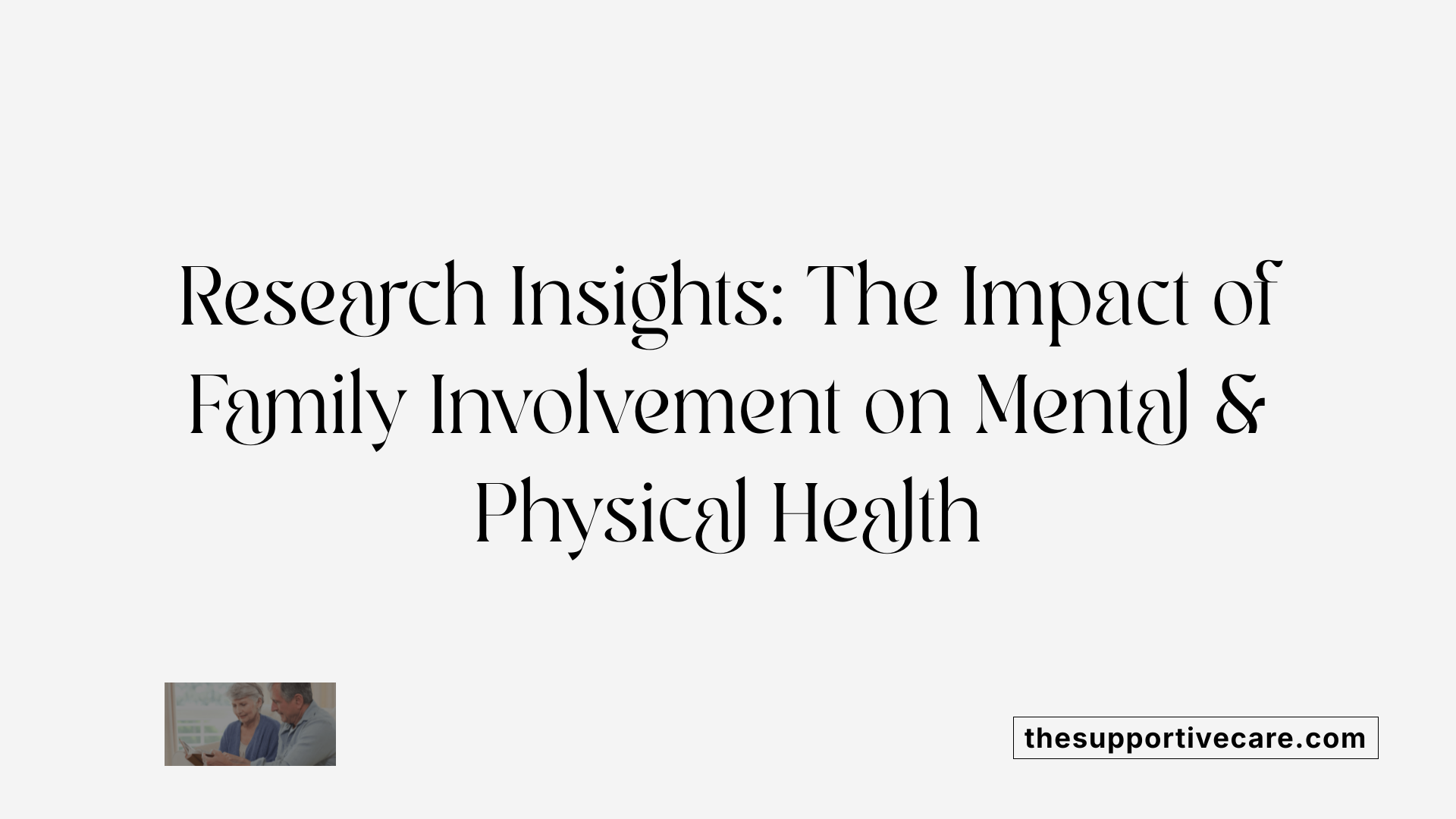
What do studies reveal about effective mental health practices involving families?
Research indicates that successful mental health support for older adults heavily relies on meaningful family involvement. Key practices include accurately identifying family members and carers, establishing open lines of communication, and actively involving families in treatment planning and decision-making. Assessing the specific needs of family caregivers and providing ongoing support through psychoeducation and referrals are also vital.
These approaches are highly regarded within mental health services, with importance scores often exceeding 88 out of 100 in surveys, highlighting their perceived value by family members and professionals alike. Implementing such practices leads to improved engagement, greater satisfaction with care, and enhanced treatment outcomes. Families report feeling more supported and understood, which reduces feelings of isolation and fosters better adherence to prescribed care routines.
The evidence underscores that policies and clinical practices must prioritize family-centered, empathetic, and culturally responsive interventions. Such inclusiveness not only addresses the emotional and psychological well-being of seniors but also facilitates recovery and resilience. The integration of family into mental health services is essential for delivering holistic and effective care that respects the preferences and circumstances of older adults.
How do recent models and programs support senior behavioral health through family involvement?
Innovative models like IMPACT, PEARLS, and Healthy IDEAS exemplify the shift toward collaborative, holistic approaches that embed family participation at every stage of care. These programs focus on early screening for mental health issues, personalized treatment plans, and continuous support systems that actively include families.
Integrated care initiatives such as I-IMR, HOPES, and Assertive Community Treatment (ACT) extend this focus by utilizing interdisciplinary teams and community-based resources. They aim to respect the principles of the 4Ms framework—What Matters, Medication, Mentation, and Mobility—ensuring care remains patient-centered and tailored to individual preferences.
By involving families, these programs improve engagement, reduce hospital admissions, and support sustained recovery. Family members are empowered to participate in decision-making, monitor progress, and help connect seniors with community resources, fostering resilience and social inclusion.
This integrated approach emphasizes that active family involvement is not ancillary but central to effective behavioral health care for seniors. The models demonstrate tangible improvements in health outcomes and patient satisfaction, reinforcing the importance of family engagement as a core component of elder mental health strategies.
Future Directions and Strategies for Family Engagement

What are some future directions for enhancing family participation in senior behavioral health?
Looking ahead, several strategies are poised to strengthen family involvement in the care of older adults facing behavioral health challenges. A prominent approach involves increasing the adoption of culturally responsive practices. Recognizing the diverse backgrounds and cultural preferences of families helps tailor engagement efforts, fostering trust and relevance in care planning.
Peer support networks are also becoming vital. These groups allow families with shared experiences to exchange insights, offer mutual encouragement, and develop resilience. Leveraging these networks can empower caregivers, reduce feelings of isolation, and provide practical coping strategies.
Continued engagement throughout the entire care journey is crucial. This means involving families early at diagnosis or initial assessments and maintaining their participation during treatments, transitions, and even end-of-life planning.
Technology plays a significant role in future strategies. Digital tools like the ThoroughCare platform facilitate remote communication, enabling families to access care plans, share updates, and stay involved regardless of physical distance.
Training clinicians and healthcare teams in family-centered communication is another priority. Educating professionals on collaborative decision-making, cultural competence, and empathetic engagement enhances trust and ensures that family voices are integrated into treatment plans.
Policy development will support these efforts by expanding caregiver resources, improving access to information, and embedding family involvement as a standard aspect of care protocols. The combination of these strategies aims to create a flexible, comprehensive framework that not only sustains family participation but also improves health outcomes and nurtures a strong, supportive environment for seniors.
By implementing these forward-looking measures, healthcare providers can ensure that families are active, effective partners in managing behavioral health in older adults, ultimately leading to more personalized, respectful, and successful care experiences.
Building Stronger Bonds for Better Outcomes
Effective family involvement in behavioral health planning for seniors is essential for fostering a supportive, responsive, and person-centered care environment. By overcoming barriers, leveraging policies and resources, and adopting innovative, culturally sensitive practices, healthcare providers and families can collaboratively improve health outcomes, enhance emotional well-being, and strengthen the quality of life for older adults. As the landscape of senior care evolves, sustained commitment to family engagement will remain central to achieving holistic, respectful, and effective behavioral health services.
References
- Involving Family Caregivers to Shape Multisector Plans for Aging
- Re-Imagining Family Involvement in Residential Long-Term Care
- The Role of Family in Geriatric Mental Health
- The Value and Process of Engaging Family in Care Management
- Future Care Planning: Concerns of Elderly Parents Caring for a ...
- Family Involvement In Senior Care: Building A Supportive Network
- The Role Of Family Involvement In Assisted Living Care Plans
- Mental health service engagement with family and carers
- [PDF] Supporting the Mental Health Needs of Older Adults | SAMHSA







































